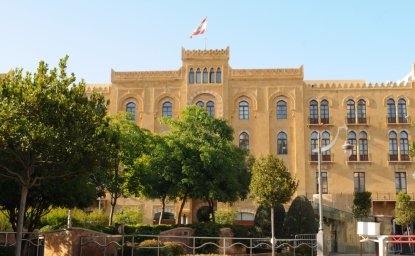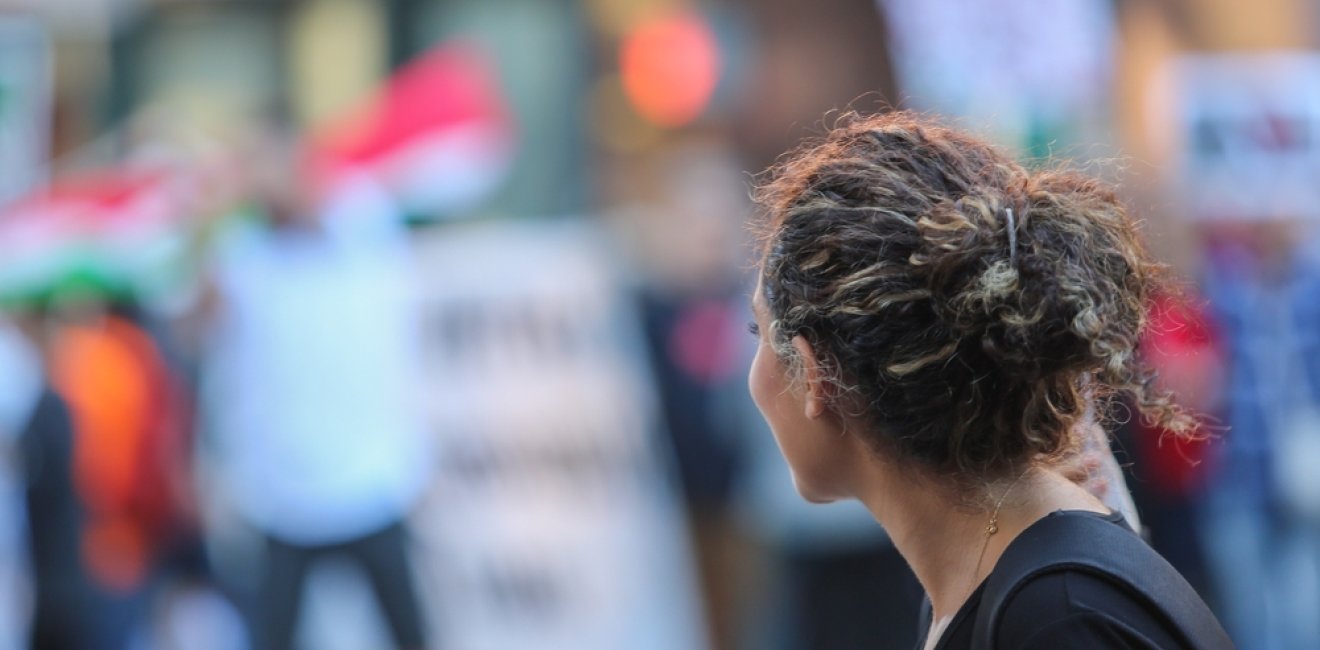
A blog of the Middle East Women's Initiative
While world headlines are focused on the important deal the US reached with Iran to release Iranian-American prisoners, the regime in Tehran has been equally busy with the new hijab law. Iran’s President Ibrahim Raisi seems haunted by the idea of Iranian women continuing to go in public without the Islamic headdress. In fact, he can’t stop talking about the subject. In a speech honoring “the defenders of the shrine”—a reference to Iranian troops who died fighting alongside the forces of President Bashar Assad in Syria—he made a point of promising his audience that the problem of hijab-less women will be settled very soon. They “should not worry,” he said, as if Iranians are experiencing sleepless nights, worrying whether women are observing the hijab or not.
Iranians do worry—a lot—about abysmal economic conditions, inflation, the high cost of living, and the rise in food prices. They resent rampant official corruption. They desire an end to interference in their private lives by meddlesome officials. They dream of a government answerable to the will of the people. They demand an end to long prison terms and executions of the young protesters who poured into the streets last year over the hijab and ended up calling for an end to the dictatorial regime. They want to see the 20,000 young women and men who were jailed during the protests and still awaiting trial or already serving time to be freed. Instead of addressing these serious issues topmost in people’s minds, the regime continues to obsess over the ‘grave’ problem of hijab observance.
Following last year’s severe crackdown on protesters, which proved futile so far, as hijab observance is concerned, the regime seemed to have concluded that it was best to leave women alone to choose whether or not to wear it. But in early August, the Morality Police reappeared on the streets as the Judiciary Committee of the Majlis, or parliament, was considering a new law to enforce hijab observance.
While the 'Hijab Wardens' will not have the authority to arrest or fine violators, this is small comfort to women. There are several other security forces with such authority.
At the same time, numerous other security forces came out on city streets to reinforce the efforts of the Morality Police. Tehran municipality is due to send out its own team called the “Hijab Wardens.” Its job, according to regulations still under discussion, will be to ensure women observe the hijab when boarding the metro. While the Hijab Wardens will not have the authority to arrest or fine violators, this is small comfort to women. There are several other security forces with such authority.
Meanwhile, there is the serious, yet laughable new law drafted and approved by the Judiciary Committee, with no less than 70 articles being considered by Parliament. The law bears the resounding title of “Hijab and Modesty.” Once the law is enacted and approved by the Guardians Council, a body of 12 clerical experts in Islamic law, it will be ready for implementation by the government.
The law will criminalize violating the mandatory hijab, imposing heavy fines or prison terms. A provision under consideration will allow the judiciary to withdraw such fines directly from the person’s bank account and block an account-holder’s access to her own account.
Businesses who allow women without the hijab on their premises will face heavy fines and the possible closure of their business for still-to-be specified periods of time. A friend who is a shopkeeper in Tehran told me that, to avoid calamity, he has tens of headscarves stacked up in front of his shop. An employee hands them to scarf-less customers as they walk into the store and urges them to wear it.
Other provisions of the law would delight the anchors of late-night political satire shows like Saturday Night Live, had they existed in Iran. The law is intended “to stop the spread of the culture of nudity, unchastity, hijab-lessness and ill-dressing.” What precisely these vague terms mean is anybody’s guess. Women are barred from wearing in public “see-through” clothing and tight-fitting dresses that emphasize the shape of their bodies, or dresses that expose any part of the body “below the neck and above the ankle.” And lest men feel left out, they too are prohibited from wearing “see-through” outfits, or clothing that leaves bare their chests, shoulders, or anything above their ankles. (The parliamentarians seem to be guarding against the imaginary. During many visits to Iran in earlier years and in conversation with friends since then, I have never seen or heard of women or men walking around in see-through clothing).
In the new law there is once again discussion of reimposing male-female segregation on university campuses, in workplaces, and places of medical practice. In the early years of the Islamic Revolution, the regime tried to segregate university classes and bar male doctors from treating female patients and women doctors from treating male patients. But this impossibly impractical measure was short-lived. On university campuses, the government settled for having male students sit on one side of the classroom and women on the other, while banning intermixing and even conversation between male and female colleagues. All these measures soon fell by the wayside. Now, four decades later, in their mystifying wisdom, Iran’s parliamentarians are reverting once again to these exercises in futility.
Author


Middle East Program
The Wilson Center’s Middle East Program serves as a crucial resource for the policymaking community and beyond, providing analyses and research that helps inform US foreign policymaking, stimulates public debate, and expands knowledge about issues in the wider Middle East and North Africa (MENA) region. Read more


Middle East Women's Initiative
The Middle East Women's Initiative (MEWI) promotes the empowerment of women in the region through an open and inclusive dialogue with women leaders from the Middle East and continuous research. Read more

Explore More in Enheduanna
Browse Enheduanna
Women are the Catalysts for Change in Lebanon

How Education Can Empower Young Women in MENA


